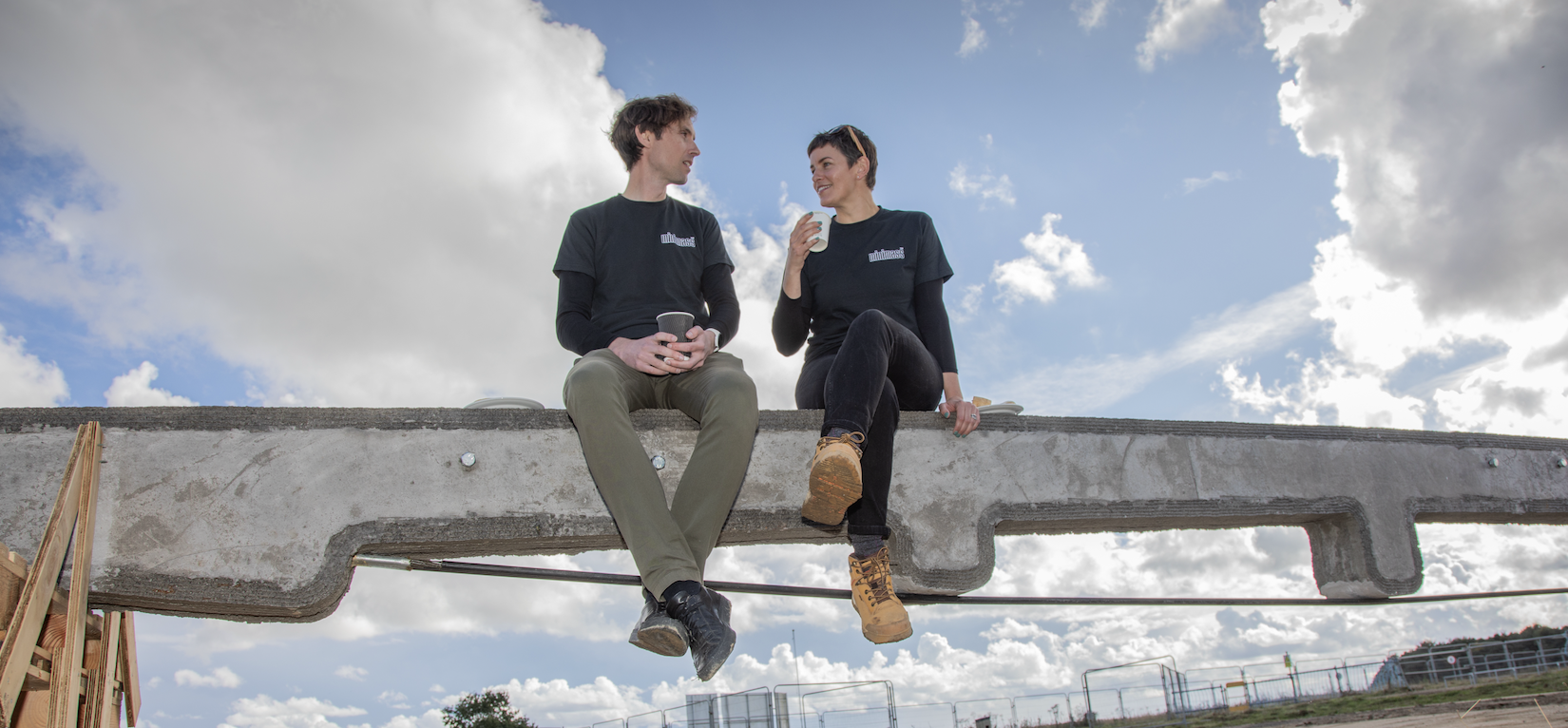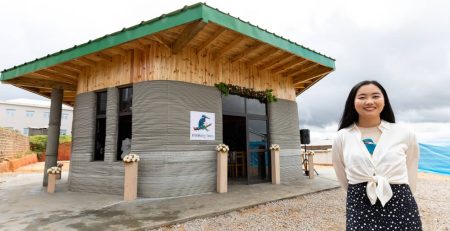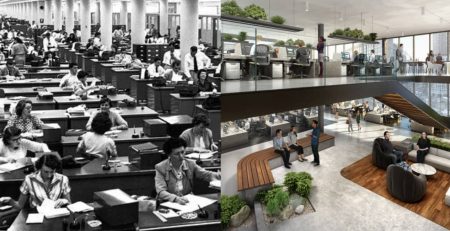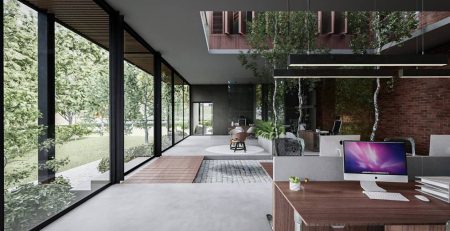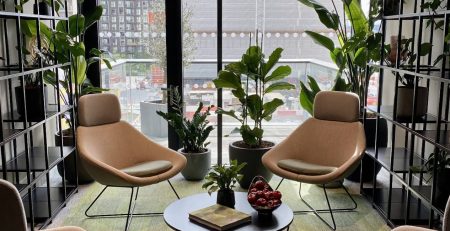Q&A with minimass: Reinventing How We Build for a Low-Carbon Future
Founded in 2021, minimass is turning heads in the construction world by using 3D concrete printing to drastically reduce the carbon and cost of building large structures.
We sat down with Andy Coward (Founder & CEO) and Sarah Blake (Co-founder & Commercial Director) to learn more about the journey, the technology, and what’s next for this ground-breaking startup.
Who founded minimass, and what inspired its creation?
Andy: I founded the business in August 2021. I’d been working as a structural engineer in architecture practices which were very focused on reducing embodied carbon, but cost was often a blocker, so the improvements were marginal. Simultaneously, we’d been exploring the potential of 3D concrete printing (3DCP) but found the problem was the difficulty of reinforcing it for structural purposes.
I started thinking more deeply about this, and during lockdown, had the chance to develop my ideas. What if we could combine 3DCP with other technologies to unlock more efficient geometries in structural elements and slash material use, and therefore both carbon and – crucially – cost?
Can you tell us a bit about your backgrounds and how they shape minimass?
Andy: I’m a structural engineer with over 20 years’ experience. I started in design consultancy at AECOM, worked onsite with Kier, and then moved into engineering teams at international architecture firms Foster + Partners and Bjarke Ingels Group, where I spent 7 years at each. For my role as Head of Engineering at BIG, I moved to Copenhagen, which is where I’m now based with my family. Being in Copenhagen was very beneficial in the R&D phase for minimass, as one of the main 3DCP manufacturers (COBOD) is headquartered here.
Sarah: Andy and I first met at the same college at Cambridge University in 2002, and realised we’d grown up on the same street. I joined minimass as Andy’s Co-founder in 2023. My background is in strategy consulting and commercial real estate. I spent 11 years at British Land, with roles across insights, business development and CRM, which helps with understanding the client perspective. We’ve got shared values and very complementary skillsets.
What’s the mission behind minimass?
Andy: Our mission is “minimum construction for maximum development.” The world can’t simply stop building – but we can build smarter, using less material. We want to eliminate the carbon footprint of construction without costing the earth.
What does the name “minimass” mean?
Sarah: It’s a mashup of “minimise” and “mass”. We do this by using only the material needed in the design calculations and eliminating everything else, as well as removing the need for formwork. Traditional concrete beams are rectangular simply because it’s the cheapest box to make in which to pour wet concrete, but the shape is not efficient as most of the material is redundant. 3D printing gives us the ability to make custom geometries for no extra cost, and place material exactly where it’s needed.
For those unfamiliar, what does minimass actually offer?
Andy: In one sentence, minimass offers a transformational low-carbon, low-cost and high-speed design and engineering solution for large-scale construction, vastly reducing the quantity of materials used in the structure of large buildings and bridges.
How is minimass positioned to disrupt the construction industry?
Sarah: We’re bringing a solution which is transformational but also familiar in many ways, particularly to start with. We’re using concrete and steel, recognisable geometries, relatively established techniques and code-compliant design, with no new installation skills required. However, our approach is radically more efficient.
minimass is also ideally positioned to help accelerate the adoption of new low carbon materials by reducing the quantity needed, making these more affordable to the industry.
Who are your ideal partners or clients right now?
Andy: Our primary focus is currently on the industrial & logistics (I&L) sector. Developers in this space see the carbon, speed and cost benefits clearly, especially for warehouses where the building’s frame accounts for up to 40% of the whole life carbon, so halving its carbon is a real game-changer. The ability to print onsite on these schemes also means programme timelines can be cut significantly.
We’re also engaging with contractors, engineers, architects and cladders, and looking to partner with an experienced concrete frame sub-contractor to provide the installation for our portal frames, giving a like for like replacement for a steel frame.
Any exciting projects you’re currently working on?
Sarah: We’ve recently signed a letter of intent with a 3D printing contractor based in the Middle East to design and build a small warehouse together in Q3 2025. This will showcase what their 3D printer can do, including both our portal frames and single-span beams.
We’ve also secured our first commercial contract for the design of two bridges at a residential development in Ireland – a pedestrian and a cycle bridge. We’re now seeing promising developer interest across the UK I&L sector, with paid comparison studies agreed with two highly-regarded players.
What’s the response been like from the real estate community so far?
Sarah: The response to our portal frame from the I&L sector has been very encouraging. Developers – especially those which are agile and sustainability-focused – are keen to trial minimass on future projects.
Selling standalone beams has been more challenging in commercial buildings, where projects have a much longer lead time, we’re further removed from the end client and our product is less holistic. However, we’ve also seen a lot of interest, particularly in London, and minimass has been included in tenders by some well-known contractors. We’re confident in the longer-term opportunity.
What are minimass’s core values?
Sarah: We’re guided by integrity, transparency, continuous learning, collaboration, and lastly diversity & inclusion, of which construction desperately needs more!
What trends in construction are you most excited or concerned about?
Andy: We’re excited about the development of low carbon structural materials and keen to support their adoption by the supply chain through material reduction.
However, we’re also watching the rollback in US support for low carbon concrete with concern. Regulations like the UK’s Net Zero Carbon Buildings Standard are essential to drive real adoption. The technology exists – we just need policy to catch up.
If you could change one thing about the way we build, what would it be?
Andy: That the industry wasn’t so conservative. To shift the dial more people need to be willing to be first-movers, to take smart risks on innovation.
What’s next for minimass?
Sarah: Over the next 18 months, our plan is to build three pilot warehouses of increasing size in the UK, establishing minimass as a credible low-carbon alternative to steel frames (which are used in 99% of I&L buildings in this country). We’re also looking to raise £2m in seed funding to fuel this pilot phase.
Any final thoughts or milestones to share?
Andy: we built a world-first 10.8m demonstrator footbridge in September 2024 at Constructionarium’s site in Norfolk, with funding from Innovate UK – the first Eurocode-compliant structure to be built using 3D printed concrete beams. The beams were fully instrumented and the bridge was successfully load tested after six months. This project has shown the industry that minimass works, both in terms of technical performance and procurement process.
The future of construction is smarter, more efficient and more sustainable. And minimass is one of those leading the charge.
For partnership enquiries or more info, visit www.minimass.net or follow minimass on LinkedIn.


